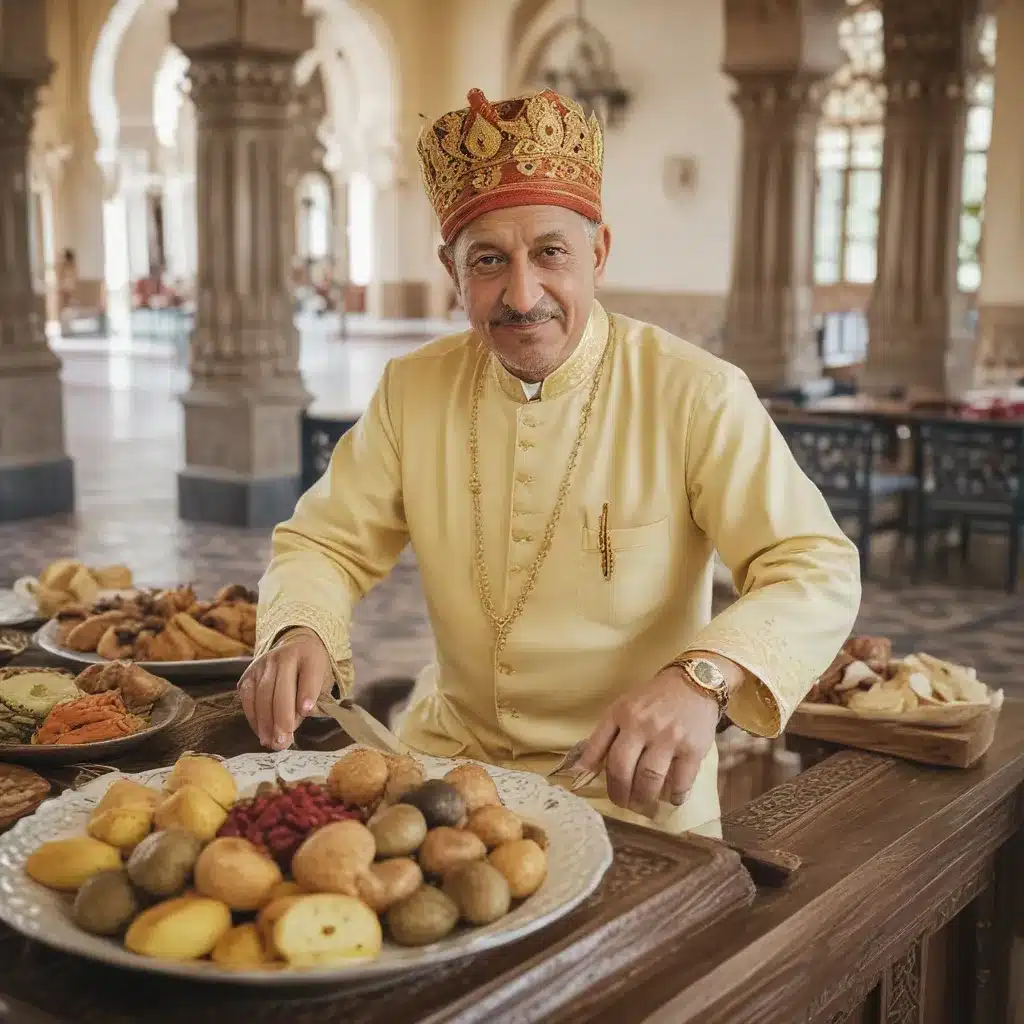
Uncovering the Treasures of Moroccan Cuisine in the Heart of New York City
As I stepped through the ornately carved wooden doors of El Bahia, the Moroccan restaurant in the heart of New York City, I felt like I had been transported to another world. The air was thick with the intoxicating aroma of spices, the walls adorned with intricate tilework, and the soft sounds of traditional music filled the air. I knew I was in for a culinary adventure unlike any other.
Discovering the Flavors of the Sultanate
My journey into the world of Moroccan cuisine began with a delectable array of mezes, or small plates, that tantalized my taste buds. The fresh bread served alongside a selection of dips and spreads, including the creamy, garlic-infused hummus and the tangy, roasted baba ganoush, was a revelation. Each bite transported me to the bustling souks of Marrakech, where the air is thick with the aroma of spices and the sounds of haggling merchants.
As I delved deeper into the menu, I discovered the true heart of Moroccan cuisine: the tagines. These slow-cooked stews, named after the distinctive clay dish they are prepared in, are a testament to the culinary artistry of the Sultanate. The tender lamb tagine, infused with the warm, earthy flavors of cumin, cinnamon, and saffron, was an absolute delight, while the vegetable tagine, bursting with the sweetness of caramelized onions and the depth of preserved lemons, proved that Moroccan cuisine is not just about meat.
Exploring the Royal Palaces of Flavor
As I savored each bite, I couldn’t help but imagine the opulent royal palaces of Morocco, where these dishes were once served to the sultans and their guests. The Saadian Tombs, with their intricate tilework and grand architecture, seemed to whisper the stories of the past, while the Badi Palace, though now in ruins, still evoked the grandeur of a bygone era.
The centerpiece of my culinary journey, however, was the couscous, a staple of Moroccan cuisine. Served with a variety of stewed meats and vegetables, the fluffy, perfectly steamed grains were a revelation. I couldn’t help but marvel at the skill and patience required to prepare this dish, as each grain was individually hand-rolled and steamed to perfection.
Indulging in the Sweetness of Royal Tradition
As my meal drew to a close, I was presented with a selection of Moroccan pastries, each one a work of art. The flaky, honey-drenched pastries and the decadent almond cookies were a testament to the country’s rich culinary heritage, passed down through generations of master bakers.
As I savored the final bites, I couldn’t help but feel a sense of awe and reverence for the culinary traditions of Morocco. These were not just dishes, but rather the embodiment of a rich cultural tapestry, woven together by the hands of countless artisans and generations of royal chefs.
Bringing the Sultanate to Your Table
In the heart of New York City, El Bahia has managed to capture the essence of Moroccan cuisine, transporting diners to the bustling markets and grand palaces of the Sultanate. From the fragrant spices to the intricate flavors, every dish is a testament to the rich cultural heritage of this captivating country.
Whether you’re seeking a taste of the exotic or a deeper connection to the flavors of Morocco, a visit to El Bahia is sure to leave you feeling like a sultan, indulging in the royal recipes that have been passed down through the ages. So, come and explore the culinary wonders of the Sultanate, and let your taste buds be your guide on a journey fit for a king.


